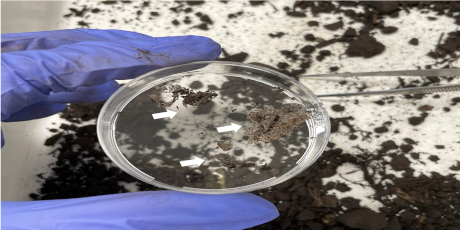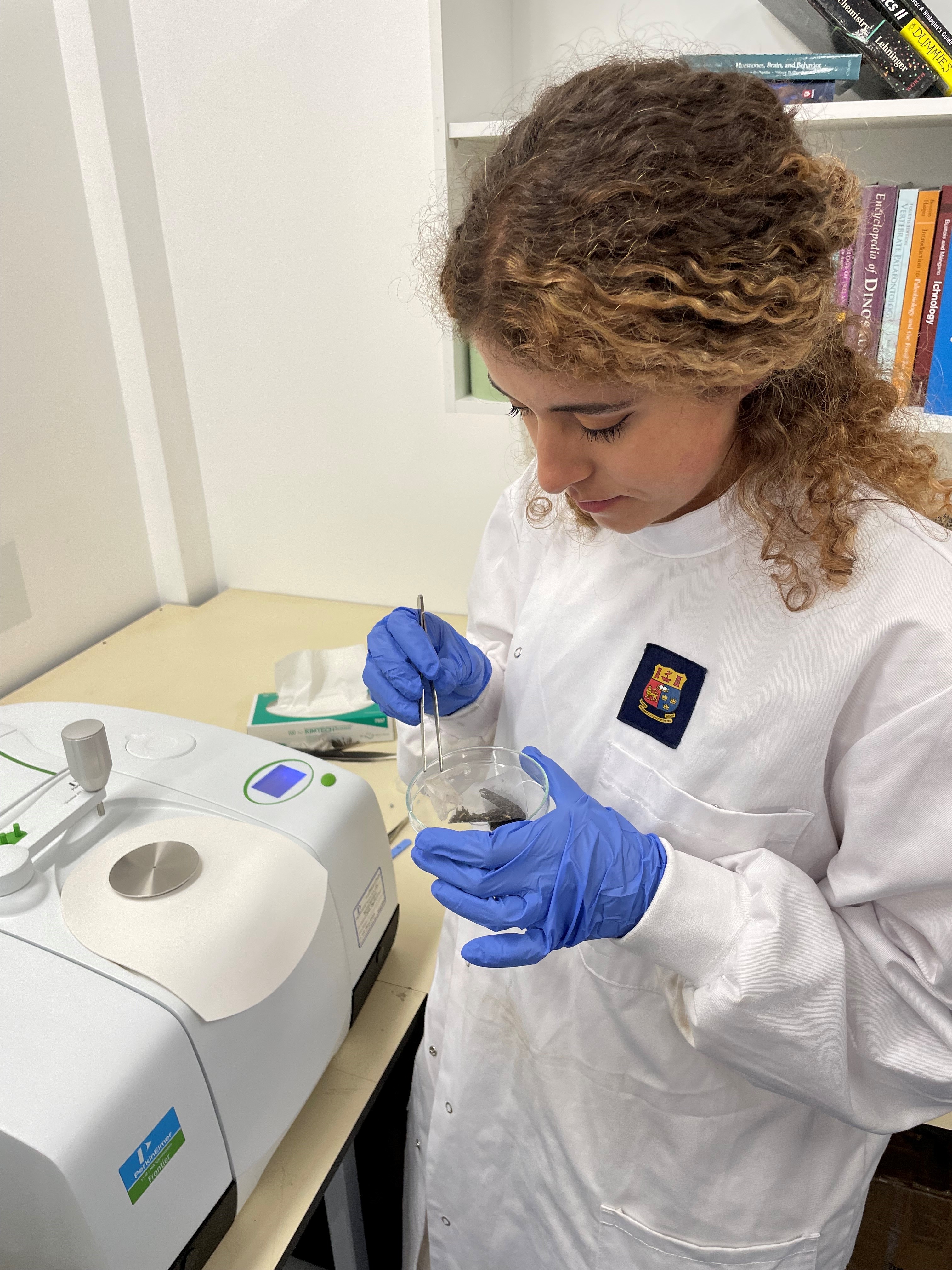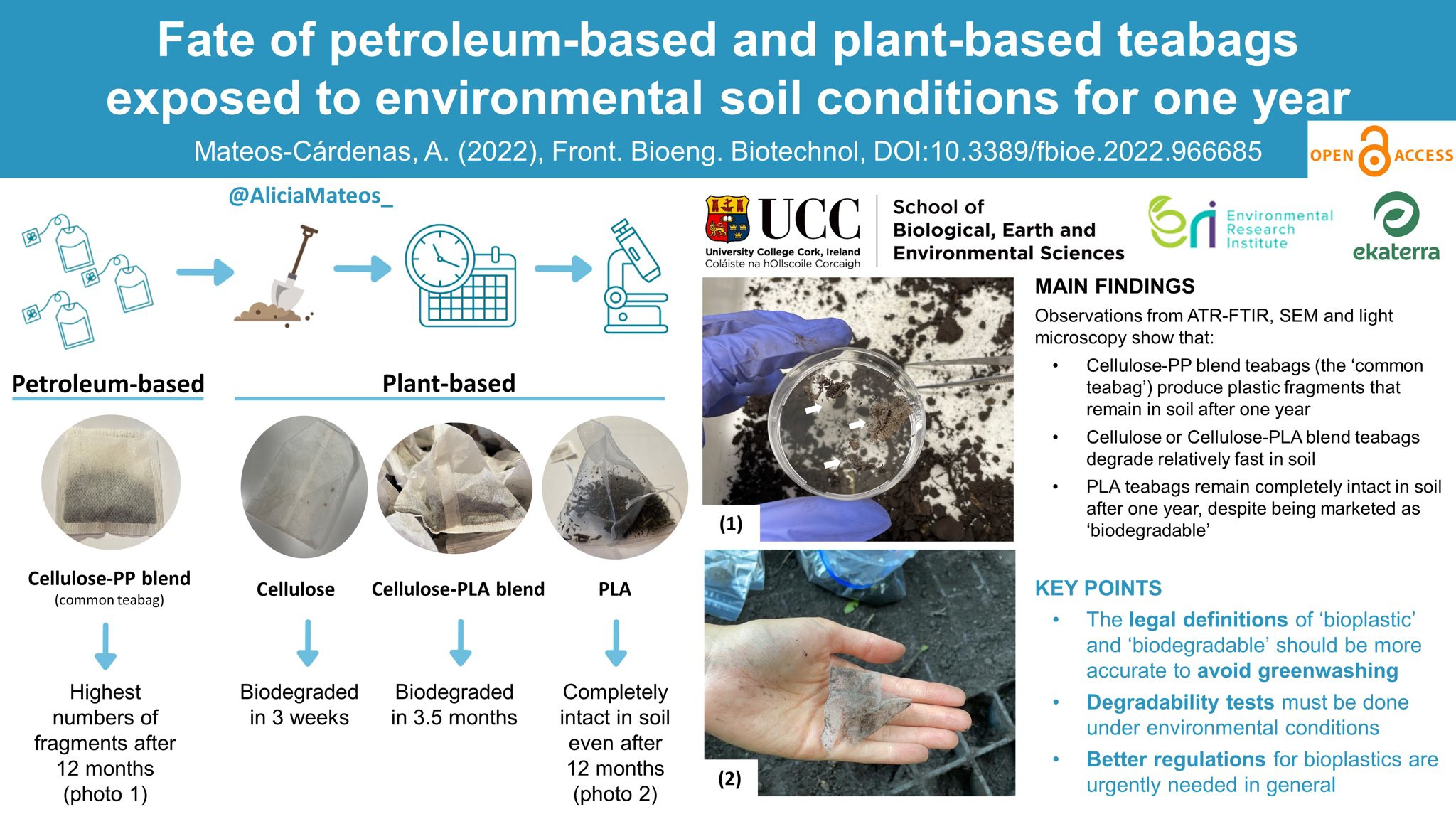Not all “biodegradable” teabags are living up to their name, new UCC study reveals 13 Sep 2022

Irish people are among the top tea drinkers in the world, but little do we know about the impacts that our teabags are having in the environment. We may think that our teabags are made entirely of paper and can be put into the compost bin, but surprisingly the majority of teabags on the market contain a plastic called polypropylene (PP) as a sealant. Recently, some major Irish tea brands have started to switch to alternative materials made of plants, like cellulose or the so-called “bioplastics” like polylactic acid (PLA), but are these alternatives actually biodegradable? Newly published research from UCC compared the degradation of teabags from eight different brands commonly found on Irish shelves.

Study leader Dr. Alicia Mateos-Cárdenas, postdoc at UCC, in the laboratory
For the study, teabags were individually buried outdoors in garden soil in Cork city during 2020 and 2021 and checked periodically for one year. After a year, all teabags and their fragments were measured and visualised using a powerful microscope to look for signs of degradation.
The main findings of the study show that, after 12 months in soil, teabags made of a blend of cellulose and PP (conventional plastic), the most common teabag found in the supermarkets, had produced the highest numbers of fragments. This was expected, as plastics are known to degrade into smaller fragments called microplastics. Interestingly, teabags made entirely of PLA (‘bioplastic’), which were marketed as completely biodegradable, were still found completely intact in soil.
However, not all teabags behaved the same and some did biodegrade in soil. The teabags made entirely of cellulose biodegraded within 3 weeks, while those made from a blend of cellulose and PLA (bioplastic) biodegraded in 3.5 months. That’s because the blend contains PLA in only a very small ratio, meaning that the teabag is mostly made of cellulose which is known to degrade very fast.
The main findings of the study show that, after 12 months in soil, teabags made of a blend of cellulose and PP (conventional plastic), the most common teabag found in the supermarkets, had produced the highest numbers of fragments. This was expected, as plastics are known to degrade into smaller fragments called microplastics. Interestingly, teabags made entirely of PLA (‘bioplastic’), which were marketed as completely biodegradable, were still found completely intact in soil.
However, not all teabags behaved the same and some did biodegrade in soil. The teabags made entirely of cellulose biodegraded within 3 weeks, while those made from a blend of cellulose and PLA (bioplastic) biodegraded in 3.5 months. That’s because the blend contains PLA in only a very small ratio, meaning that the teabag is mostly made of cellulose which is known to degrade very fast.

“Alternative materials are being placed into the market with little research behind their impact in terms of degradation potential, which has mostly been tested under laboratory conditions that do not resemble the real environment,” says study leader Dr. Alicia Mateos-Cárdenas, postdoctoral researcher at the UCC School of BEES and Environmental Research Institute (ERI) “It is very important to understand the true fate of bioplastics as well as continuing to understand the pervasiveness of plastic pollution. Studies like this can offer factual and topical results to industries and policy makers, especially for the upcoming international meetings towards a UN plastics treaty which will regulate the production and pollution of plastics”.
The study is published in the journal Frontiers in Bioengineering and Biotechnology.
This study was part of a project funded by Ekaterra, the research was independently controlled by the author.